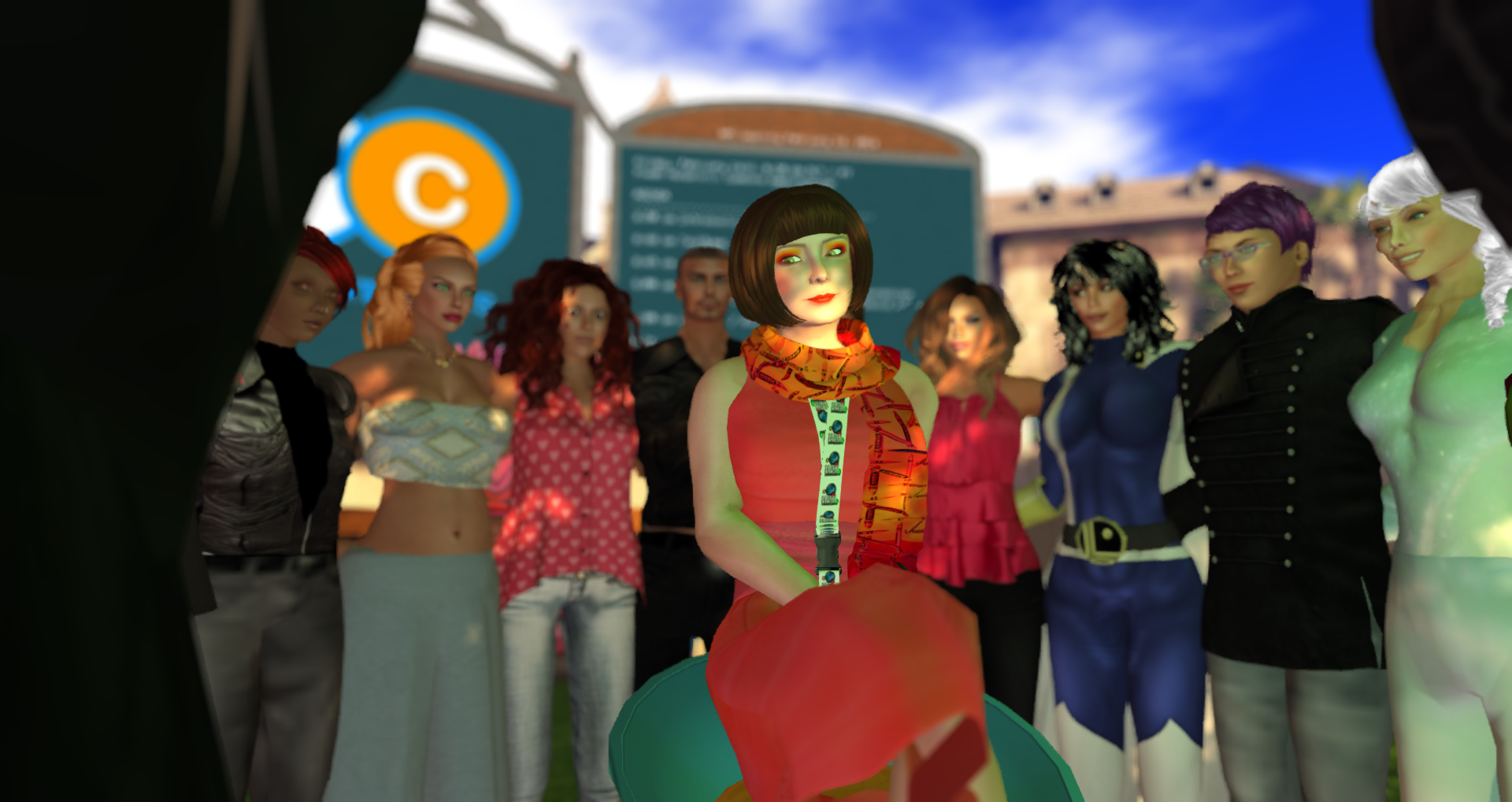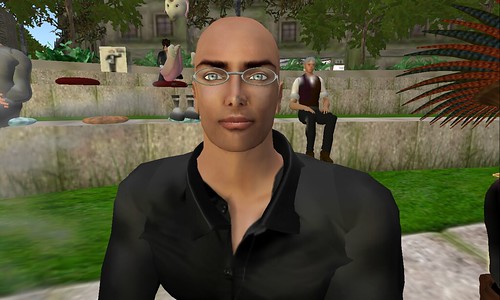On September 23, at the Nonprofit Commons in Second Life, Douglas Maxwell of the U.S. Army Simulation & Training Technology Center spoke about the “MOSES” virtual world being used by the US Army for prototyping and training purposes. Read about how the US Army is using virtual worlds to train soldiers in how to handle difficult cross-cultural negotiations in real time, among other applications.
Read on for Doug Maxwell’s remarks, edited for clarity…
<
Doug Maxwell of the U.S. Army Simulation & Training Technology Center on the MOSES Virtual World Platform
Edited Comments by Mr. Maxwell at the Nonprofit Commons meeting in Second Life
September 23, 2011
Good Morning everyone, its a pleasure to be here today. Also, thank you very much for your interest in our work.
I am Douglas Maxwell and I began working in modeling and simulation in the mid 90s. My MS is in Mechanical Engineering, but I have a heavy focus on software engineering. I recognized back then that it was important to take a look at Modeling and Simulation (M&S) from a multidisciplinary approach. I was recruited by the Naval Research Lab out of college to work in their Virtual Reality Lab in Washington DC. I am a civilian civil servant, GS14.
My interests in virtual environments began when I noticed people were becoming immersed in the simulations we created. it isn’t logical to duck when a virtual object is flying at you, but they did. It told me they had made the mental leap from reality into the virtual environment we created. So I started looking at gaming technologies. A wonderful thing happened in the late 90’s. Nvidia releasted the first commercially available and cost effective PC based 3D graphics accelerators. We no longer needed a $750k SGI computer to do 3D tasks. I published a journal article showing how a cheap PC cluster could replace it (http://www.linuxjournal.com/article/6294). This was 2002 (I got some hate mail for that one).
Fast forward to today, almost a decade later. We have ubiquitous 3D app in almost everything: PC, browser, mobile. Now we need to concentrate on interfaces. Intuitive interactions will be the next “killer” app. Keyboard and mouse are klunky. Voice is coming along, but not there yet. Touch screens too. I tried to write a research paper on a tablet recently and got sore. it was an exercise to see if it could be done. Today I’m working on my PhD at the University of Central Florida. My focus is on scalable and flexible virtual worlds.
We have done a number of experiments with large numbers of people in a virtual world. Last week, our team was at Ft. Benning, GA. We had nine soldiers logged into our EDGE system (Enhanced Dynamic Geosocial Environment). At Fr. Irwin, CA, we also had three native language speakers logged in. They spoke Pashto and Dari. They performed roles as interpreters and afghan village natives. At Ft. Leavenworth, KS, we had another native language speaker logged in acting as an afghan village elder. At Ft. Monroe VA, we had observers logged in. At Ft. Hood, TX, we had observers logged in. Back in Orlando, we had a technical staff monitoring the servers and logged in as well. As you can see, we had a widely distributed training event. However, that does not include the dozens of NPCs and autonomous entities. It was a medium scale exercise.
What is attractive to me about virtual worlds is they are non deterministic. We set the goals not the makers of the virtual world. Every participant in the exercise has been in Afghanistan and returned home. Every participant had been in the area of Afghanistan that we modeled. The observer / trainer inworld gave the platoon leader a mission. In this case, it was a key leader engagement. The platoon leader used his knowledge to organize the fire teams (2 in this case) and lead them to the village, conduct an investigation, find the elder, and use their cultural knowledge to properly elicit information from him. The experiments were run nine times, mixing up the people and roles a bit. We had stunning success. I made a quick movie from captures of the event.
Today I was asked to speak about project MOSES. The Military Open Simulator Enterprise Strategy was created out of necessity. Back in 2008, we (the military) began looking at the Second Life platform and were amazed at how flexible it was. It is a computationally steerable persistent simulation. The capabilities in here are tremendous: in situ scripting, terrain deformation in real time, every object is composable, not static. We got the idea that if we could increase the fidelity of the physics in here, it could actually be very useful.
There are draw backs, but the advantages and potential make this platform work taking a look at. The biggest issue we had at the time with SL was the network access. We wanted to use it for serious work, but the data we had was not for public consumption. We cannot ever expose sensitive (classified, for example) data to the open Internet. Back in 2008, we experimented with Open simulator, but found it very fragile. I reached out to Linden Lab and they proposed the Second Life Enterprise as a solution.
In 2009 and 2010 we worked with Linden Lab to harden the SLE so it would work on a military network. Unfortunately, in May of 2010 we were informed by LL that they were no longer supporting the SLE. That left us in a bind. We had a HUGE investment in the SLE. I have found that creating content is much more expensive that the platform itself.
I took another look at Open Simulator. It had matured significantly since 2008: it was more stable, feature rich, even allowed for *gasp* backups! In March of 2011, I decided to stand up MOSES and debut it at Gametech 2011 as a hands on “this is open simulator” demo.
I know of many users in the Military, Industry and Academia who where in the same dilema as myself. How do we preserve the content? We were able to migrate all of our content from our SLE to the MOSES before the license expired. The objective of the project is to evaluate open sim for suitability as a replacement to the “behind the firewall” capability we need. Its goals are to provide a persistent and stable virtual world, VOIP, base content, mesh, media on a prim, and monitoring tools.
I have MOSES on a commercial network at http://fvwc.army.mil/moses. It is open to anyone wishing to contribute to the project. It is composed of 117 sims. We have all branches of the military in it. We have a number of academic institutions. We have a few industry contributors as. well.
When you register an account, I personally email you to find out why you want to be in MOSES and how you would like to contribute. There are no casual users. The academics really like this, as it provides a safe environment for their students. I encourage you to sign up and take a look. We have done things like import actual afghanistan terrain and replicate actual areas.
I hold office hours every Friday at 3PM eastern.The weekly office hours are a great way to meet open simulator developers and our team. We usually have 20-ish in attendance. A good way to follow is by my twitter account @vrdeity. My email is douglas.b.maxwell@us.army.mil.
Thank you very much for having me.
Written by: rikomatic


